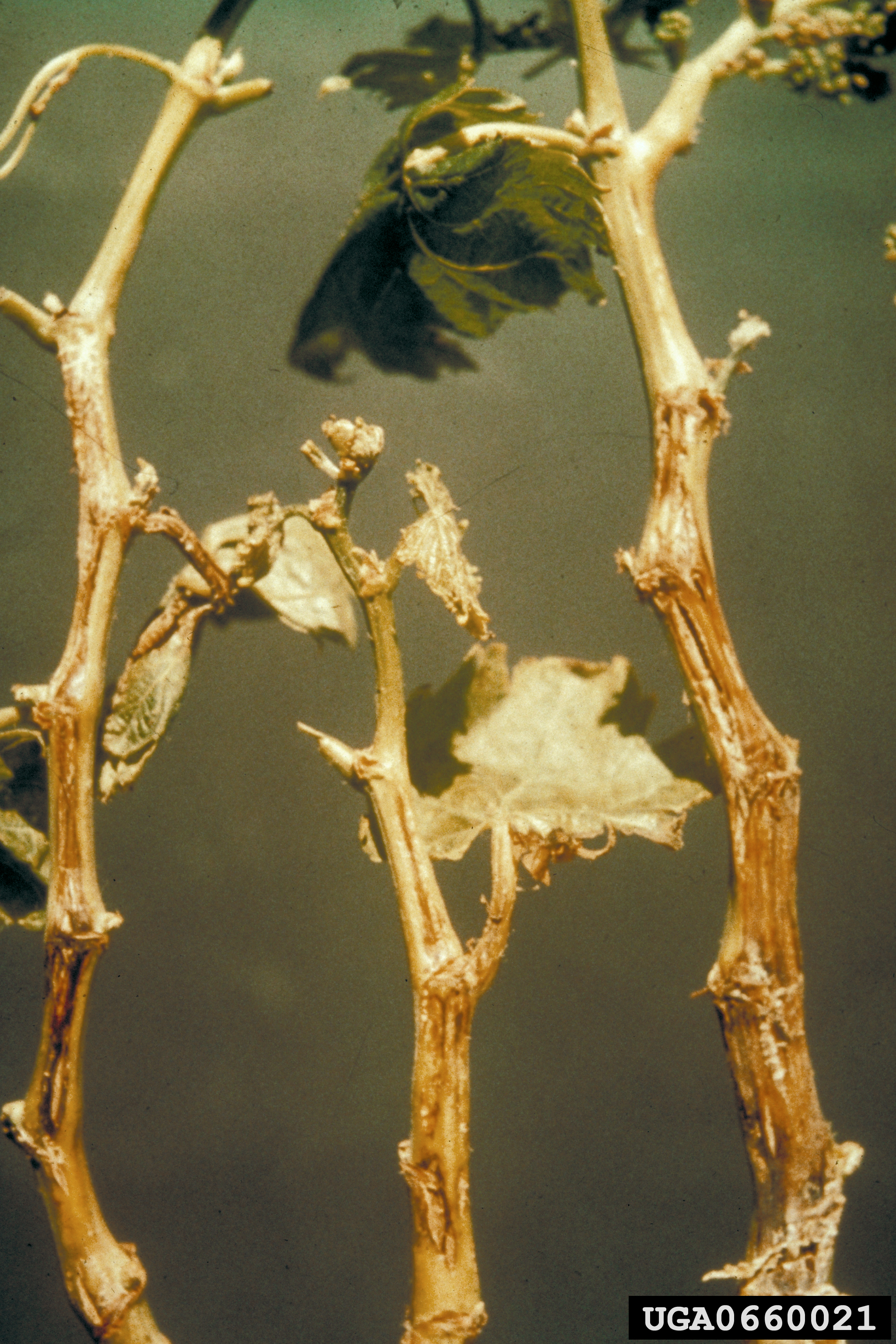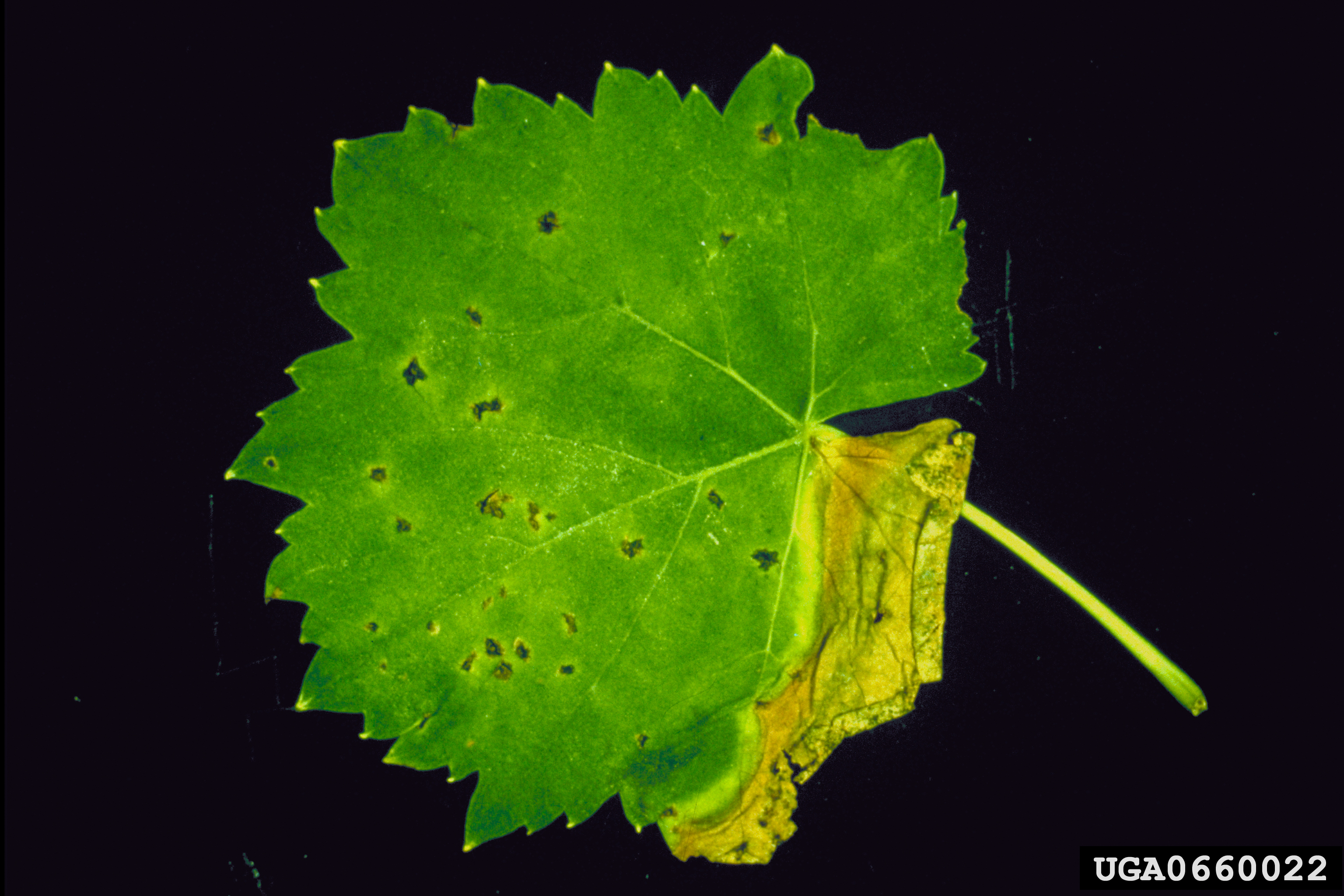
Bacterial blight of grapevine
| Primefact number | Edition | Published | Author |
|---|---|---|---|
| 1267 | First | Jan 2013 | Plant Biosecurity and Product Integrity |


Xanthomonas ampelina is an exotic plant pest causing bacterial blight of grapevine. This disease is a serious threat to Australia’s viticulture industry.
Severe infection of susceptible cultivars can lead to serious harvest losses. Symptom assessment and visual inspection of bacterial blight should be confirmed by laboratory diagnosis.
Notifiable status
Bacterial blight of grapevine caused by Xanthomonas ampelina is not a notifiable plant disease in NSW.
However, if you suspect Bacterial blight of grapevine:
- Call the Exotic Plant Pest Hotline 1800 084 881
- Email biosecurity@dpi.nsw.gov.au with a clear photo and your contact details
A full list of notifiable plant pests and diseases can be found in Schedule 2 of the NSW Biosecurity Act 2015.
Symptoms
Shoots
The first signs of infection are linear reddish-brown streaks on the shoot, extending from the base to the shoot tip. Lens-shaped cracks and cankers then develop and are sometimes as deep as the pith. Callus formation or other plant wound responses are not evident. Shoots subsequently wilt, droop and dry up (Figure 1).
Cross-sections of older stems reveal a browning of the tissues. On very young shoots discolouration is less common and the whole shoot dies back.
Infected shoots are shorter than normal, giving the vine a stunted appearance. Infected stalks of grape bunches are also stunted and die back.
In cases of severe infection a large number of adventitious buds develop but these quickly die back.
Leaves
Infected leaves develop angular reddish-brown lesions. Leaf death often occurs (Figure 2).
Light-yellow bacterial ooze may be seen on infected leaves when humidity is high.
Flowers
Infected flowers which have not reached maturity turn black and die.
Roots
Bacterial blight infection of grapevine roots will appear as poor shoot growth whether the plant is grafted or on its own rootstock.
Disease cycle
Primary infection occurs on shoots that are one or two years old. Infection usually occurs on the lower two to three nodes of shoots that are 12-30 cm long and spreads slowly upwards.
Infection may be transmitted systemically though the plant or the bacterium can penetrate leaves through open stomates.
Bacterial blight of grapevine is readily transmitted with pruning tools and enters healthy tissues mainly through pruning wounds. Bacterial transmission is greatest in wet and windy weather. Bacteria can spread between shoots in the early summer.
Hosts
All grape (Vitis vinfera) varieties are susceptible to bacterial blight of grapevine.
Distribution
Bacterial blight of grapevine is present in many European countries including France, Greece, Italy, Moldova, Portugal, Slovenia and Spain.
The disease has been reported from South Africa and South America.
Spread
Natural dispersal of bacterial blight of grapevine is limited to the vineyard and the immediately surrounding areas. Within the vineyard, spread from the initial infection point tends to occur along the rows.
Bacterial blight of grapevine can be spread to new areas by infected planting material.
Actions to minimise risks
Put in place biosecurity best practice actions to prevent entry, establishment and spread of pests and diseases:
- practice “Come clean, Go clean”
- ensure all staff and visitors are instructed in and adhere to your business management hygiene requirements
- source propagation material of a known high health status from reputable suppliers
- monitor your vineyard regularly
- keep records

